Mabe Pearls: The only gemstone that isn't a stone
Today’s featured gemstone isn’t a stone at all… but it is a gem! It’s one you’ve probably seen but maybe haven’t heard of. It’s grown in water with a little help from artisans. It’s Mabe Pearl!
How Pearls are Formed
Before we jump into Mabe Pearls specifically, let’s learn about natural Pearl formation. This will help us understand some of the unique characteristics of Mabe Pearl later.
Traditional pearls are formed by an interesting process that takes place within a mollusk. An irritant like sand or a parasite first makes its way into the mollusk. Then as a biological defense, the mollusk secretes a material called nacre (pronounced like “baker”) around the intruder. The nacre keeps building up layer after layer for months, sometimes years, until it finally looks like a beautiful pearl. Talk about turning lemons into lemonade!
Finally, the mollusk is carefully pried open and the pearls are harvested. Pearls are incredibly delicate, so harvesters must be careful when removing them. Although pearls are found around the world in rivers, oceans, and lakes, the largest number of them are harvested in Japan and China.
What Are Cultured Pearls?
Only about 1 in 10,000 mollusks produce any pearls at all. So naturally occurring pearls are very rare, and therefore, expensive. It wouldn’t be very time-efficient for harvesters to keep dragging up mollusks that bear no pearls. So over the years, people have learned how to foster the pearl process in a sustainable way.
A cultured pearl is one in which the irritant has been intentionally placed inside the mollusk by a person. The irritant is still a natural material, typically sand or even a piece of mother-of-pearl (the inner lining of another mollusk). Once the human has inserted the irritant, the mollusk takes care of the rest by its own instinctive process.
How Mabe Pearls are Grown
Mabe Pearls are a type of cultured pearl, but they grow along the inner lining of the mollusk, rather than in the flesh. The pearl grower inserts the irritant along the mollusk’s shell, and the mollusk gets to work covering it with nacre. The end result is still a pearl, but it’s a dome shape, not a full sphere. For this reason, you’ll occasionally hear them called “half pearls”. They are often called “blister pearls” as well, since they form like blisters on the “skin” of the mollusk.
Where Did the Name Mabe Pearl Come From?
Personally, we prefer the Mabe Pearl’s formal name. “Half pearl” sounds like it didn’t quite live up to its full potential, and “blister” sounds so negative! But where did the name “Mabe” (pronounced MAH-bay) come from? It actually derived from the Japanese word “mabe gai”, which refers to the type of mollusk these Pearls are grown in. The Japanese were the first to master Mabe Pearl growing.
Are Mabe Pearls Real Pearls?
Mabe Pearls are real pearls, and we only sell real, high-quality jewelry at Amáli. There is some human intervention, but the pearls themselves form through natural biological processes with only natural materials involved.
If it helps, think about Pearl cultivation like gardening. Plants naturally grow in the wild. But you may choose to plant specific seeds and add ideal growing conditions (i.e water, fertile soil). The plants you grow are by no means synthetic, even though you had a helping hand in growing them. Hopefully this helps to clarify the difference between natural Pearls and cultured Pearls.
Mabe Pearls are certainly valuable, but they are not as rare as naturally occurring spherical Pearls. That makes them a bit more affordable, yet every bit as gorgeous!
Like spherical Pearls, Mabe Pearls come in different colors depending on their host mollusk. But you’ll most often see greyish Mabe Pearls with impressive iridescence. This is the kind we work with at Amáli, and we love how magical they look.
What’s So Special About Mabe Pearls?
Since pearls are beautiful in their traditional, spherical shape, you might wonder why jewelers also love to work with Mabe Pearls. All types of pearls have their place, and it really depends what you’d like to create with them. For example, we use traditional spheres for our woven pearl necklaces and pearl bracelets.
Mabe Pearls are prized for their dome shape, which makes them easier to craft into pendants and statement rings. The dome shape also means Mabe Pearls are durable, as they have a more solid backing. Because we always handcraft each bezel to fit the shape of the gem, we can accommodate for the organic shapes Mabe Pearls often come in.
Let’s look at this statement ring, for example. This Mabe Pearl has such a bold and unique shape that changes depending on the angle you look at it because of its 3D nature.
Caring for Mabe Pearls
The shape of Mabe Pearls makes them durable. However, they are still delicate and should be handled with extra care.
Pearls only rank a 2.5-4.5 on the Mohs’ scale of hardness, which means they can scratch easily. So always lay them flat in their own case away from other gems. If you choose to wear a Mabe Pearl ring, don’t leave it on while doing strenuous activities. We also recommend cleaning your pearls with a soft cloth after every wear.
Pearls are timeless. Preserve yours and they will last a lifetime.
Gem, but Not Gemstone
There’s a little bit of controversy when it comes to classifying pearls. You might hear them referred to as gemstones, but they are technically not a stone. That’s because they’re made up of organic matter; stones consist solely of inorganic matter. But according to the Gemological Institute of America, they are still gems.
Mabe Pearls, the Moon, and June!
Mabe Pearls are said to represent the moon, and it makes sense. When you look at some Mabe Pearls, it’s like looking into space! Interestingly enough, Pearls are one of June’s birthstones (though not a stone), and the other is Moonstone. Perhaps that means June is a great time to celebrate the Moon’s phases. For example, during the Full Moon, give up anything that isn’t adding value to your life. During the New Moon, refocus your energy and set goals for your next chapter.
Mabe Pearls look amazing on anyone but are especially great gifts for June babies and anyone who’s interested in the powers of the moon. One of our absolute favorites is this Mabe Pearl necklace. It has an alluring pearlescent sheen that shimmers across the surface, with hues of purple, blue and green.
Like nearly all of our jewelry, this ring is made with 18k yellow gold, which is ideal for everyday wear.
Ready to Wear Mabe Pearl?
If you’re looking for Pearl jewelry but want something a little less traditional, Mabe Pearl might be perfect for you! There’s something entrancing about its iridescence that reminds us of a far away galaxy or an enchanted lake. Large and lustrous, they’re the perfect statement piece to add to any outfit of the day. Yet they’re neutral enough to go with any colors. If you’re ready to add Mabe Pearls to your jewelry box, or you want to compare it to our traditional pearl jewelry, take a look at our pearl collection!
Recommended Articles
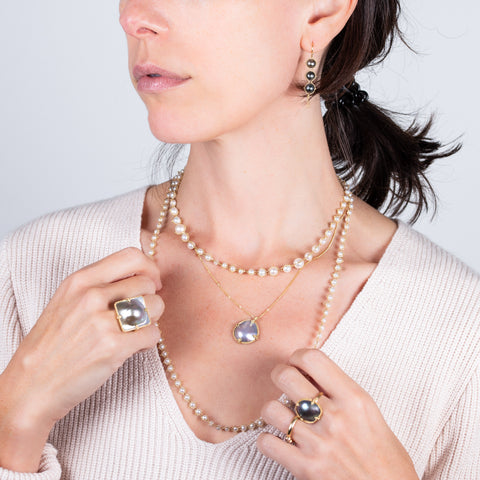

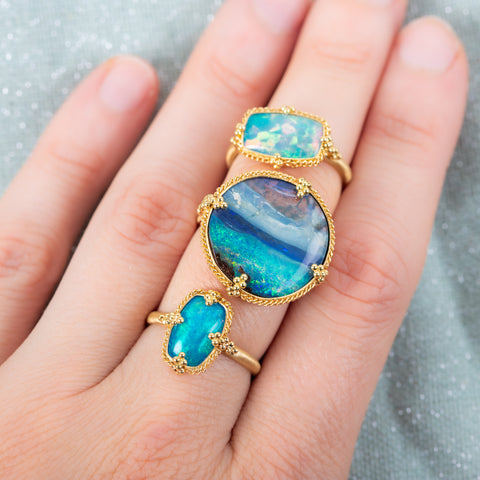
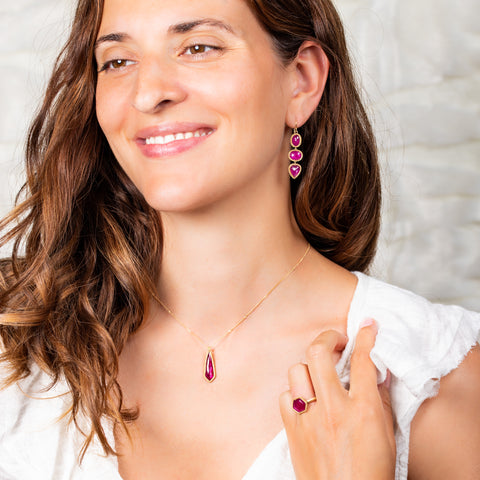


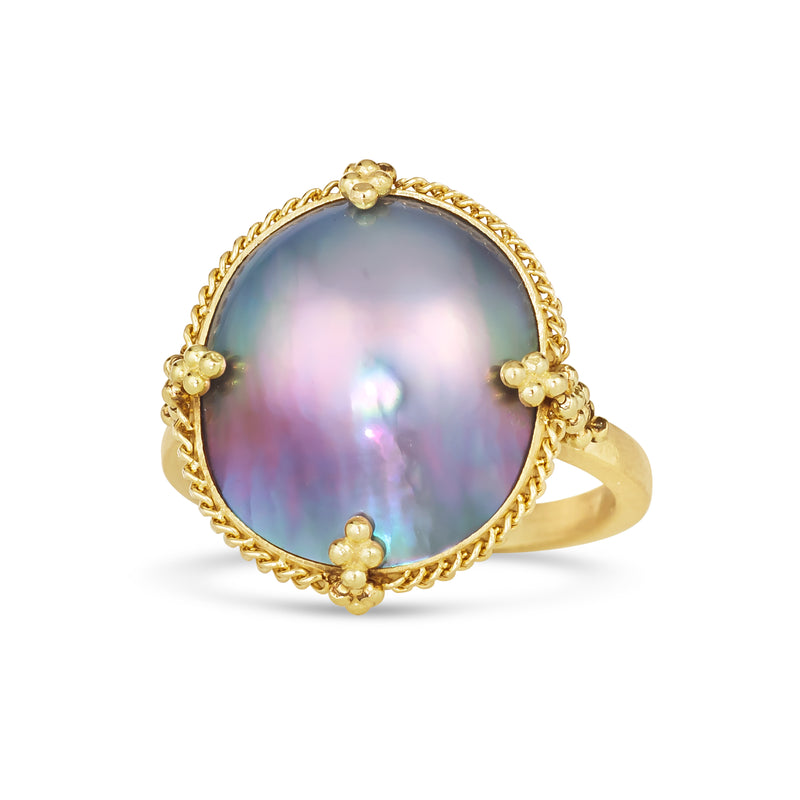
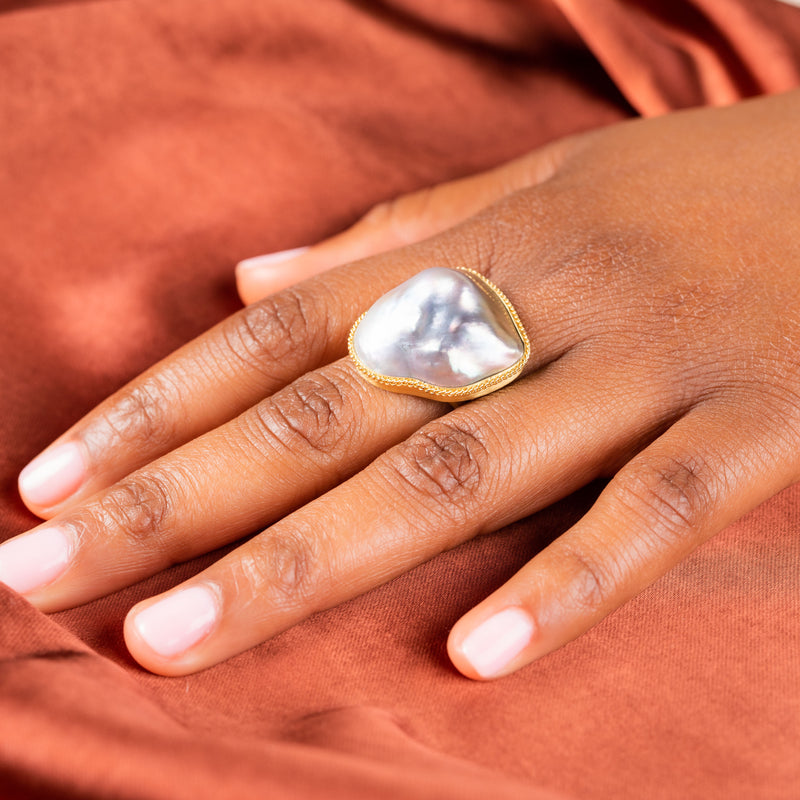
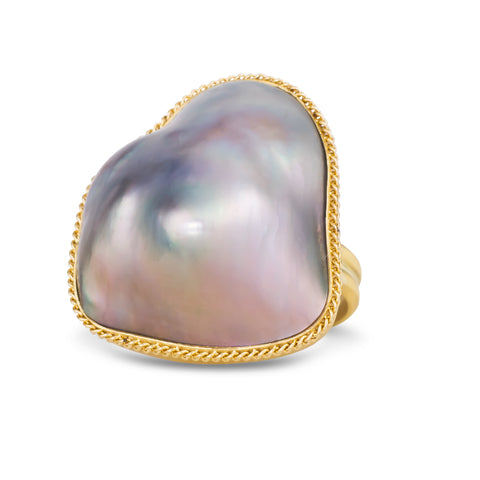

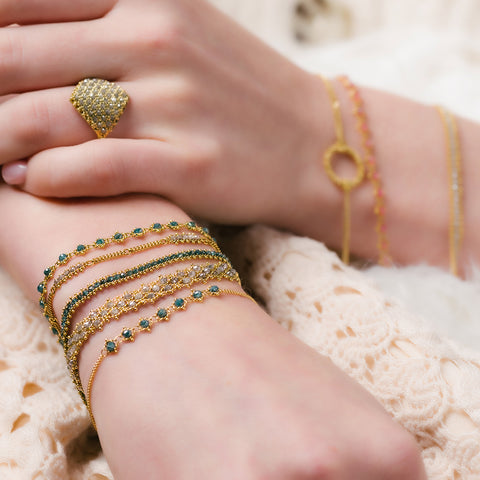
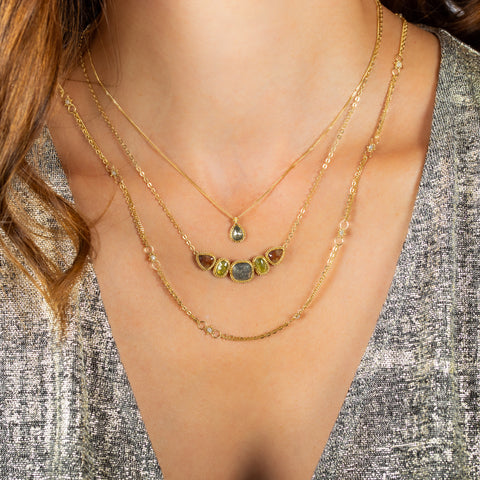
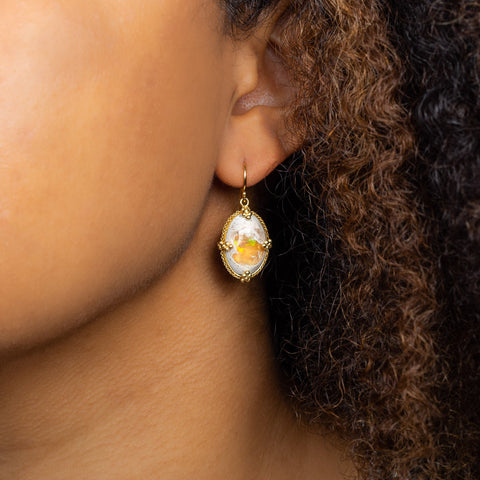

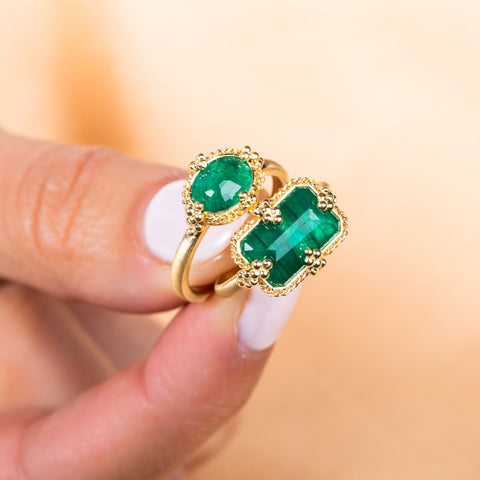
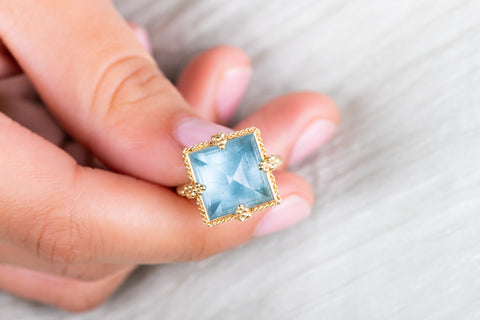
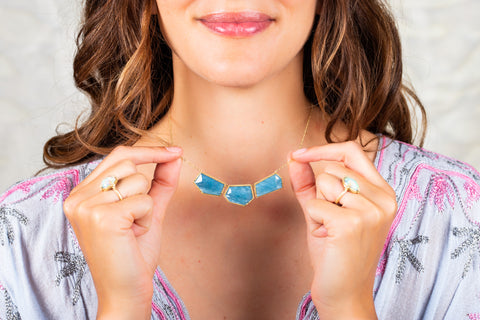
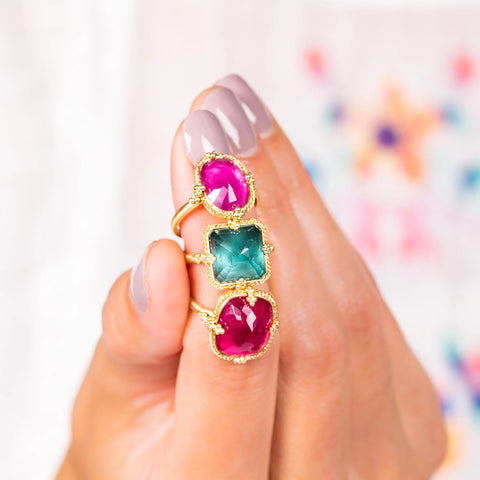
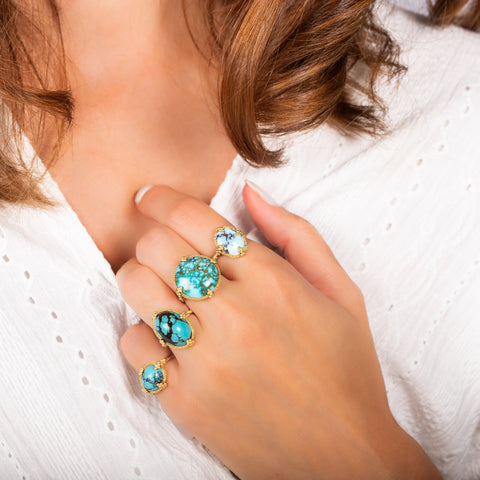
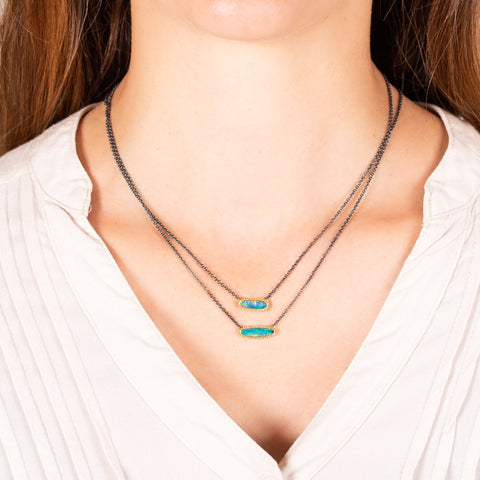
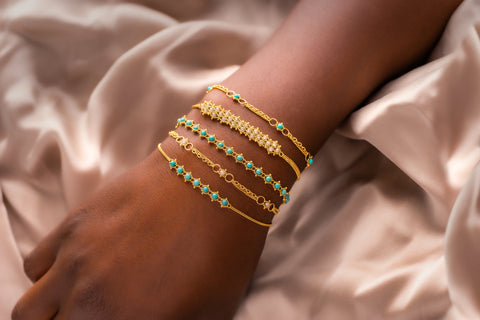

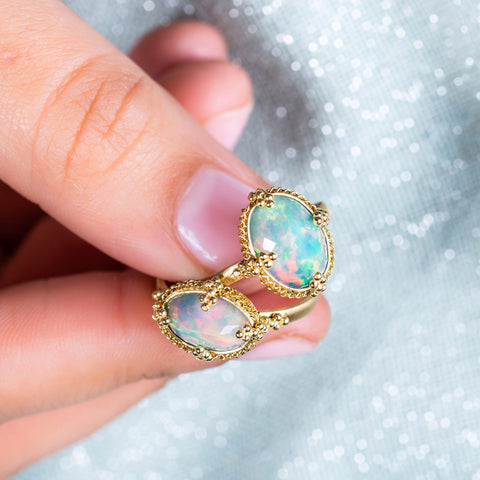

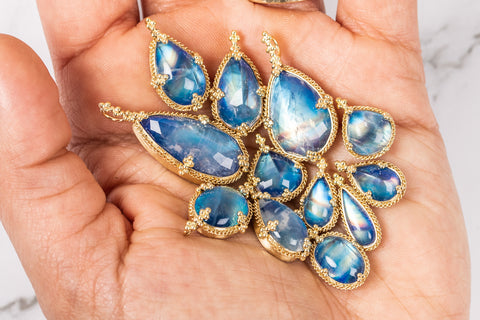
Comments (1)
I have Mabe earrings mounted o 14k white gold. They have their own attached catch for their post. I believe they are over 60 years old and would like to sell them. If you have any interest, would you please contact me? Thank you.